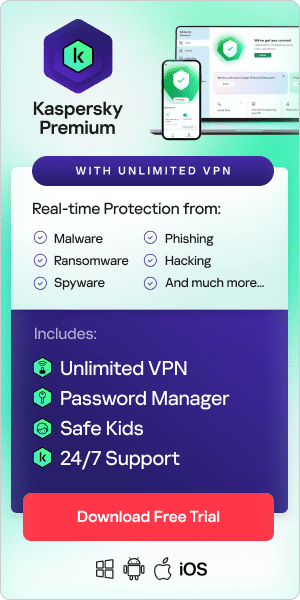
46% of all cyberattacks in 2024-25 were directed at smaller businesses, and most that are affected face closure within six months.
This shocking statistic underlines the importance of cybersecurity for small businesses all over the world. Yet, despite the risk cybercrime poses to their very viability and existence, far too many don’t have sufficient protections in place - and in some cases, no protections at all.
Good cybersecurity for small businesses isn’t just about having the right solutions in place to keep threats and bad actors out. It’s also about proactively safeguarding data, systems, users, and applications; about ensuring employees play their part in conducting themselves safely online; and about finding the most cost-effective routes to good security when in-house security isn’t financially viable.
In this small business cyber security guide, we’ll cover everything you need to know: the biggest threats you might face, the best security practices for prevention, and the technologies that can add vital lines of defense.
What are the biggest small business cybersecurity risks?
The cybersecurity threats to smaller organizations are many, and some are much more obvious and well-known than others. Given the fact that only one successful attack can cause long-lasting or even irreparable damage to an SME, it’s vital to be aware of all of them so that appropriate defensive actions can be taken:
Malware
Malware and viruses are probably the most obvious threats that spring to mind for small businesses. Malicious email attachments such as PDFs, web links, and downloads - which are often disguised to look legitimate - contain code that can be used to seize access to networks, to seize data, or even destroy data altogether.
Ransomware
Ransomware attacks have grown rapidly in recent years, particularly due to the rise of artificial intelligence (AI), and can cause huge disruption to small businesses that won’t necessarily have the resilience to maintain operations in the meantime. In these attacks, hackers steal or encrypt vital business data and demand payment from the business to restore access to it (without any guarantee that they will restore access even if the ransom is paid).
Phishing
Phishing attacks involve cybercriminals impersonating a legitimate party and contacting the victim, often with a convincing-looking email. Phishing emails will encourage the victim to open a link or download a file, from which the hackers will be able to gain access to sensitive information and credentials. Small businesses are especially at risk of bogus payment requests and invoices.
Data theft through password compromise
Many organizations still have their systems breached all too easily because an opportunistic hacker has been able to guess a password. This could be simply through trial and error, or by using ‘password spray’ malware which tries common passwords on large numbers of accounts in one go. This is particularly the case when very simple passwords are used, and when they aren’t updated regularly.
Outdated, unpatched software
Once a business application has been released, cybercriminals can start looking for vulnerabilities they can exploit - and over time, they have a greater chance of finding one. This is why developers regularly release updates that patch and close off these vulnerabilities, but many smaller businesses forget to install them.
Remote work and personal device use
With more employees working from home either some or all the time, business activities are often done across domestic Internet connections with lower levels of security - or worse still, unsecured public Wi-Fi. These risks are amplified under a ‘Bring Your Own Device’ set-up where employees use personal devices for business use, meaning any malware obtained through non-business activity could compromise business data.
Insider threats
While most employees have honorable intentions, there is always a risk of attacks from within. Insider threats that take advantage of access to sensitive systems and applications can cause huge damage, and it can be some time before the issue becomes known about. A common cause is employees having greater levels of access than is necessary for them to do their jobs
Stronger Cybersecurity for Small Businesses
Ensure secure communications and advanced threat protection to safeguard against supply chain attacks
Try Small Office Security for FreeBest security practices for small businesses
Technology has an essential role to play in supporting small business cybersecurity (and we’ll cover those technologies in detail later on). But this is only part of the story because there are several actions that a business, and employees individually, should take to reduce the risk of a breach and to minimize the impact of one that does make it through. From our experience, we recommend the following:
Backing up data regularly
If data is backed up on a regular basis, then a business can fall back on it with minimal disruption in the event of a malware or ransomware attack. Backups should be kept separate from devices used day-to-day, scheduled for a set time (ideally once a week, but potentially more often for business-critical data), and stored in a secure environment.
Storing data and applications securely in the cloud
Connected to the previous point, cloud storage solutions offer a winning combination of flexibility, security, and cost-effectiveness when it comes to keeping all business data safe. Leading cloud security can ensure properly credentialed employees can access data from anywhere; fees can also scale up or down in line with business requirements.
Developing a response and recovery plan
The faster a small business can get back up and running after a security incident, the lesser the impact operationally, legally, financially, and reputationally. A regular backup schedule is one part of a comprehensive recovery plan that should also detail how employees should work instead of once a breach has been identified in a particular area.
Updating systems and applications
Just as a backup schedule should be devised, a similar approach should also be applied to updating systems and applications, so that the latest patches and security measures are put in place at the earliest opportunity. This is also a good chance to remove any applications no longer required, which can also yield cost savings in licensing fees.
Maximizing protection on mobile devices
With smartphones and tablets so integral to many small businesses, keeping them as secure as possible should be a top priority. This includes:
- Turning on password protection
- Ensuring devices can be tracked or wiped if lost or stolen
- Avoiding connecting to public Wi-Fi
Maintaining strong passwords and changing them regularly
Good password practice is vital, so that any credentials that fall into the wrong hands are less likely to still be usable. Passwords should be changed at least every three months, easy-to-guess passwords should be avoided, and the same passwords shouldn’t be used on multiple platforms. Multi-factor authentication (MFA) can add a further layer of protection in this area
Reviewing and adjusting access control
Every employee’s required access level will fluctuate up and down all the time, whether they’ve moved into a new job role, taking on extra responsibilities, or are working on new lines of business. Reviewing access levels regularly and removing anything no longer necessary minimizes the risk of an insider attack.
Auditing and reviewing security measures
Just like access control, the security demands of a business will constantly change as its business operations evolve, and as cybercrime continues to develop. A good audit of security measures and potential vulnerabilities can help proactively spot any issues that need addressing before a cybercriminal finds them first.
Training and educating employees
According to the World Economic Forum, as many as 95% of cybersecurity issues can be attributed to human error. This underlines the importance of ensuring that every employee knows how to operate safely online and how easy it can be to be taken in by a phishing scam or fraudulent email attachment through cybersecurity training.
Which tools can aid small business security and cyberattack prevention?
Cyber attacks are getting bigger, more organized, and more advanced all the time - especially now cybercriminals can use AI to improve the speed and detail within threat development. This means that only the latest technologies can help protect against new and emerging threats, as well as existing ones. A good security technology stack should therefore include:
Email filtering
Email filtering systems are important for detecting any scam emails or phishing attacks, including those that look so convincing that even the most security-aware employees can easily fall foul of them. These filters ensure any dangerous or unwanted emails never make it as far as the end-user without restricting legitimate business communications.
Privileged Access Management (PAM)
PAM can help make access control a real-time activity and ensure that the perfect balance of productivity and security is always struck with credentials. The activities of every user and device on a network can be controlled, so that necessary access can easily be provisioned and unnecessary access can be removed.
Network logging and monitoring
PAM works especially well in conjunction with network logging and monitoring, which can keep track of who is doing what and where at any given time. This information can be assessed together with access control data, helping to identify any cases of unnecessary, unauthorized, or malicious activity.
Endpoint Detection and Response (EDR)
This protection can extend beyond users and accounts to the devices that connect to a network. EDR solutions can collect details on the nature of a device, what it’s doing on a network, and what it’s done in the past. This can be invaluable in detecting suspicious activity and if a breach does occur, investigating the source of the problem.
Threat detection and management
Threat detection tools analyze and assess not only devices on a network, but also the contents of the network itself, to pinpoint cases of unusual or suspicious activity. These tools can alert staff to potential problems that need investigating or isolate them away from the rest of the network so that any impact is kept to a minimum.
In summary: easy cybersecurity solutions for small businesses without
If you’re a small business owner reading this, thinking that it sounds like a daunting prospect that’s beyond the financial means of your organization, then don’t worry, you aren’t alone. Indeed, many larger organizations still grapple with cybersecurity fundamentals, even when they have the budget and human resources to take care of things by themselves.
Adopting a comprehensive security solution designed for small businesses is the most practical and cost-effective way forward.
For example, Kaspersky Small Office Security is available as a monthly subscription service and is priced on a per-user basis, so that unnecessary expense is eliminated. It brings together several different security features and functions, including password management, a premium VPN, malware and ransomware protection, and much more. What’s more, it can be deployed across desktop computers, laptops, smartphones, and tablets alike, meaning every employee in your business can work safely, whatever they’re doing, and wherever and whenever they’re doing it.
Related Articles:
- Email security for small businesses
- How to choose the right password manager - what to look out for
- Phishing and online video conferencing - Is your meeting invite safe to click?
Related Products:

